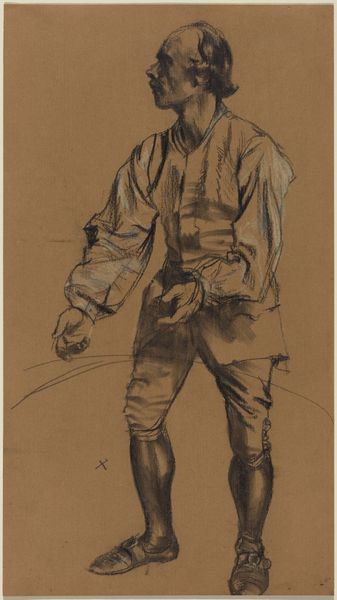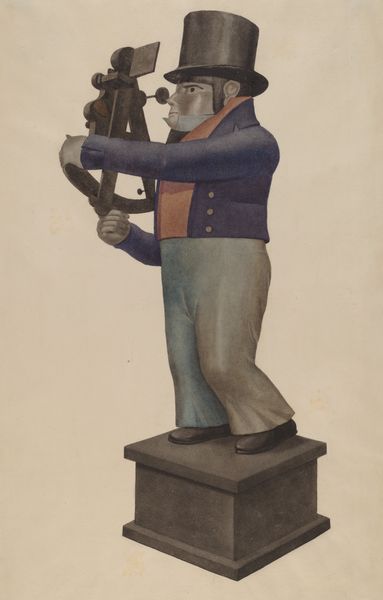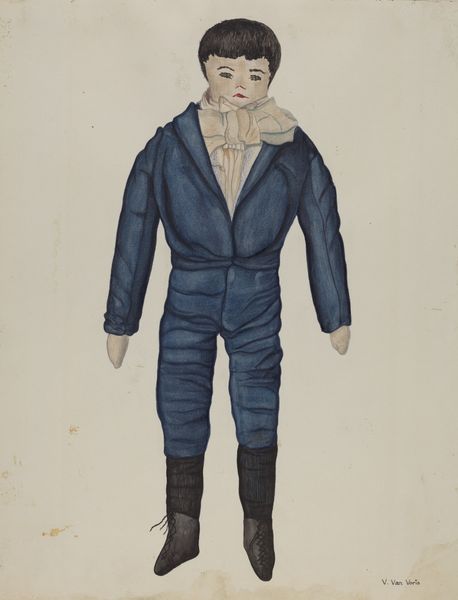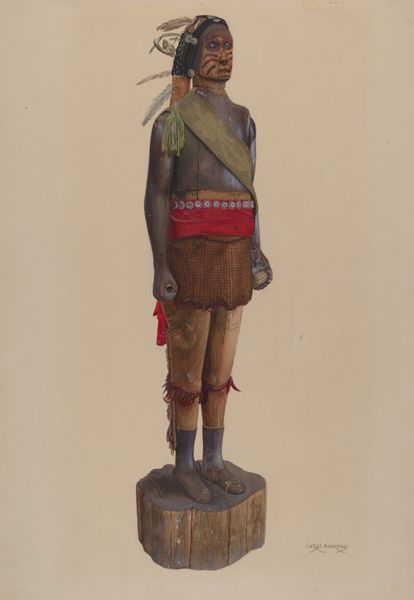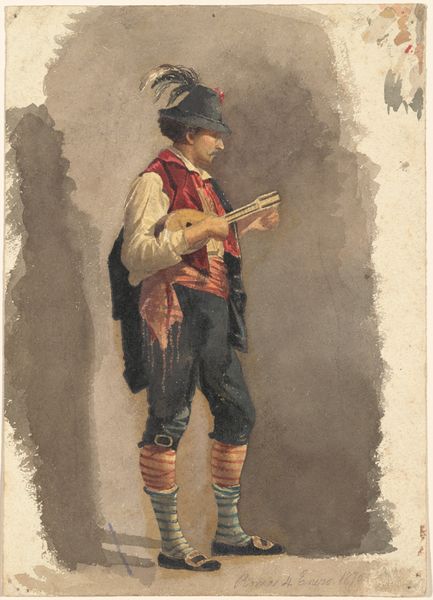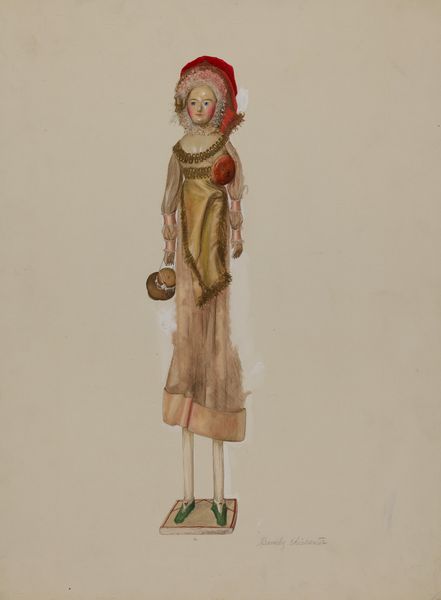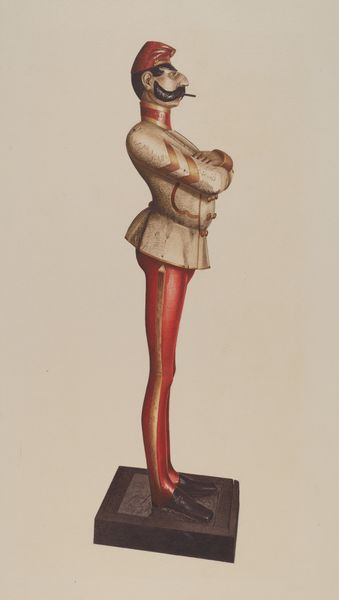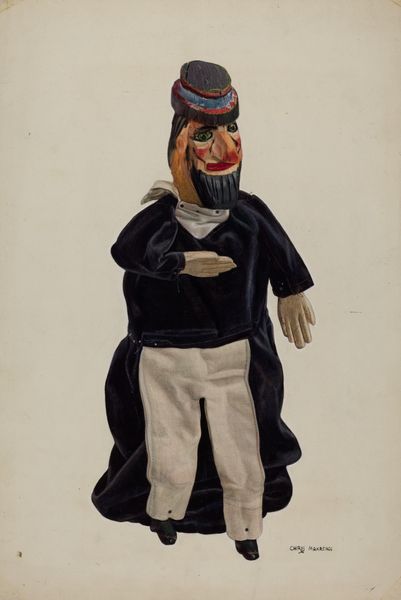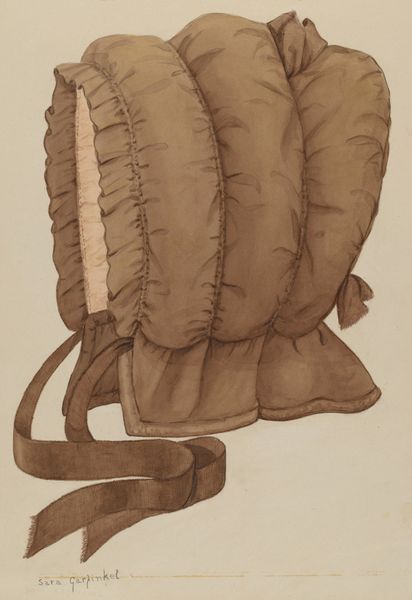
drawing, watercolor
#
portrait
#
drawing
#
caricature
#
figuration
#
watercolor
Dimensions: overall: 27.8 x 22.8 cm (10 15/16 x 9 in.) Original IAD Object: 10 1/4" high
Copyright: National Gallery of Art: CC0 1.0
Curator: Let’s turn our attention to a drawing entitled “Costume Doll,” rendered in watercolor around 1936. What strikes you most about it? Editor: The eyes, actually, or rather, the intense gaze. There's something haunting and playful in them that belies the poverty suggested by the patched clothing. It feels melancholic. Curator: Indeed. This artwork presents some challenges, doesn't it? Looking at the medium, watercolor, you get a sense of the production of art. Was it an affordable, easily accessible medium at that time? How did that factor into who had access to making art, depicting who, and for what purposes? Editor: I see your point. And there’s something unnerving about the directness. Like a character plucked from a minstrel show—a caricature built on layers of stereotype—staring back at the audience and somehow acknowledging his own constructed image. It raises the specter of harmful representation. Curator: It absolutely does. It’s imperative we consider the social context. Minstrelsy was a pervasive form of entertainment, and representations like this, unfortunately, were widespread. Examining the materials – paper, pigments – reveals clues about accessibility, production, and the historical moment. The artist, Jane Iverson, was not a household name. We must consider the power dynamics at play, her possible motivations, and who benefited from this kind of imagery at the time. Editor: I feel the internal struggle of the artist looking to create a beautiful portrait and facing their implicit racial bias while representing the subject with empathy, like this rendering might just hint to me. This is definitely an attempt to be as realistic as possible while walking on cultural quicksand. Curator: It's a complicated image. One that reminds us of the crucial role context and production play in art, how representations are made, consumed, and their lasting impact on the cultural landscape. Editor: Yes. And how beauty and historical consciousness do not necessarily exclude one another, although such conversations remain difficult yet inevitable. Thanks for sharing these observations.
Comments
No comments
Be the first to comment and join the conversation on the ultimate creative platform.
